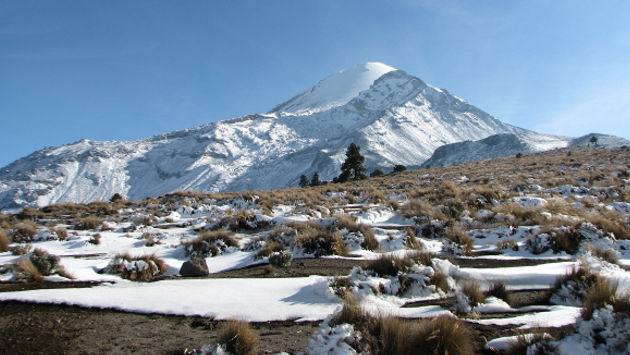The Top mountains to climb in Latin America

Mountain hiking has become an increasingly popular activity as travelers seek to make contact with nature and discover new places with incredible natural landscapes. According to data from the United Nations, mountain tourism is responsible for between 15 and 20 percent of world tourism.
In celebration of this latest trend, travel company Despegar recommends some iconic Latin American destinations for adventurous travelers who prefer to discover new places through their rugged mountains.
Latin America offers extraordinary mountains for all kinds of climbers, from the north of the continent all the way to Patagonia. Here are six of the most beautiful and challenging peaks for experts and amateurs alike.
Citlaltépetl, México
Located between the states of Veracruz and Puebla, this active volcano which is the highest peak in Mexico and third-highest in North America is one of the most popular for hiking and mountaineering. This site, known as Pico de Orizaba National Park, is ideal for hiking or camping and enjoying great views in the process. For those who want to reach the top of the Citlaltépetl, the National Park has specialized guides, as well as tours that can be booked on site.
For those considering climbing it, it’s good that they know that in autumn and winter there are many snowfalls, also a thick haze is very characteristic of these seasons. The driest season of the Pico de Orizaba is all spring and even a little earlier since it is considered from October to May. These months are excellent to visit if you want to practice mountaineering.
La Ciudad Perdida (The Lost City), Colombia
Found in the Sierra Nevada de Santa Marta, this mountain is covered with deep rainforest. In this unique place, you can explore the ruins of the Lost City Teyuna, and from there tour the Sierra Nevada de Santa Marta which is characterized by its dense jungle and its mountainous landscapes.
You can only walk through open trails deep in an incredible humid tropical forest. This hiking destination is very interesting because currently in the Sierra Nevada de Santa Marta there live different indigenous communities, descendants of the Tayronas who preserve their dialect, culture, and tradition, with whom adventurers can interact.
El Chaltén, Argentina
Located to the north of Los Glaciares National Park, in the southwestern end of Argentine Patagonia, this fabulous place has great forests, lakes, and viewpoints where the traveler can take in a unique view of the mountains and glaciers. In 1994, it was named the national trekking capital because of the great variety of trails that venture through the natural beauty of its surroundings.
The scenery is wonderful because it is where the rivers De las Vueltas and Fitz Roy meet. El Chaltén is famous for its fabulous protected natural environment and numerous trekking circuits with varying degrees of difficulty, as well as climbing routes of high technical difficulty.
Pico da Bandeira Mountain, Brazil
This hiking trail is located in the Caparaó National Park and the mountain is considered the third highest in Brazil. It has routes accessible from the towns of Espírito Santo or Minas Gerais. It’s also worth noting that this is one of the coldest places in the South American country, with an average of just 14 degrees.
It is possible to make the trail on any day of the year, but the best time to climb Pico da Bandeira is between April and October when it rains less. In winter, however, the cold makes the adventure even more challenging. The ideal thing is to go by car or bus to Caparaó, a small municipality that houses about 6,000 inhabitants. From there, you’ll need to take a drive to get to the entrance of the park and start the climb. To get to Pico, the travelers will have to walk about four hours to climb and four more to get back down.
Montaña de los Siete Colores (Seven Colors Mountain), Perú
Located 170 kilometers southwest of Cusco, this destination is also known as Vinicuncase. It is part of the Peruvian Andes Mountains and has the characteristic that its peaks acquire different colors such as turquoise, lavender, and gold, among others, which are the result of different minerals.
The walk to Seven Colors Mountain has medium difficulty. With a duration of 3.5 hours on average, this path demands an acceptable physical condition. The route includes slightly steep climbs and plains that ascend progressively. There are different paths that visitors can travel, even if they have no experience, and where they can take the best photographs from the heights.
Rainbow Valley, Chile
In the Atacama Desert, specifically in the Rio Grande basin, is the Valle del Arcoíris, a unique dream place due to its hills in the valley and its multiple hues as well as the fact that these features are combined with white salts and the blue sky. There are excursions where you can walk among colorful mountains and discover prehistoric remains in the rocks.
“Currently, there is greater awareness of a new way of traveling committed to nature, culture, and the community of each destination that is visited and in this sense, mountain tourism helps preserve the natural and cultural heritage of communities,” said Alejandro Calligaris, Country Manager of Despegar Mexico.
